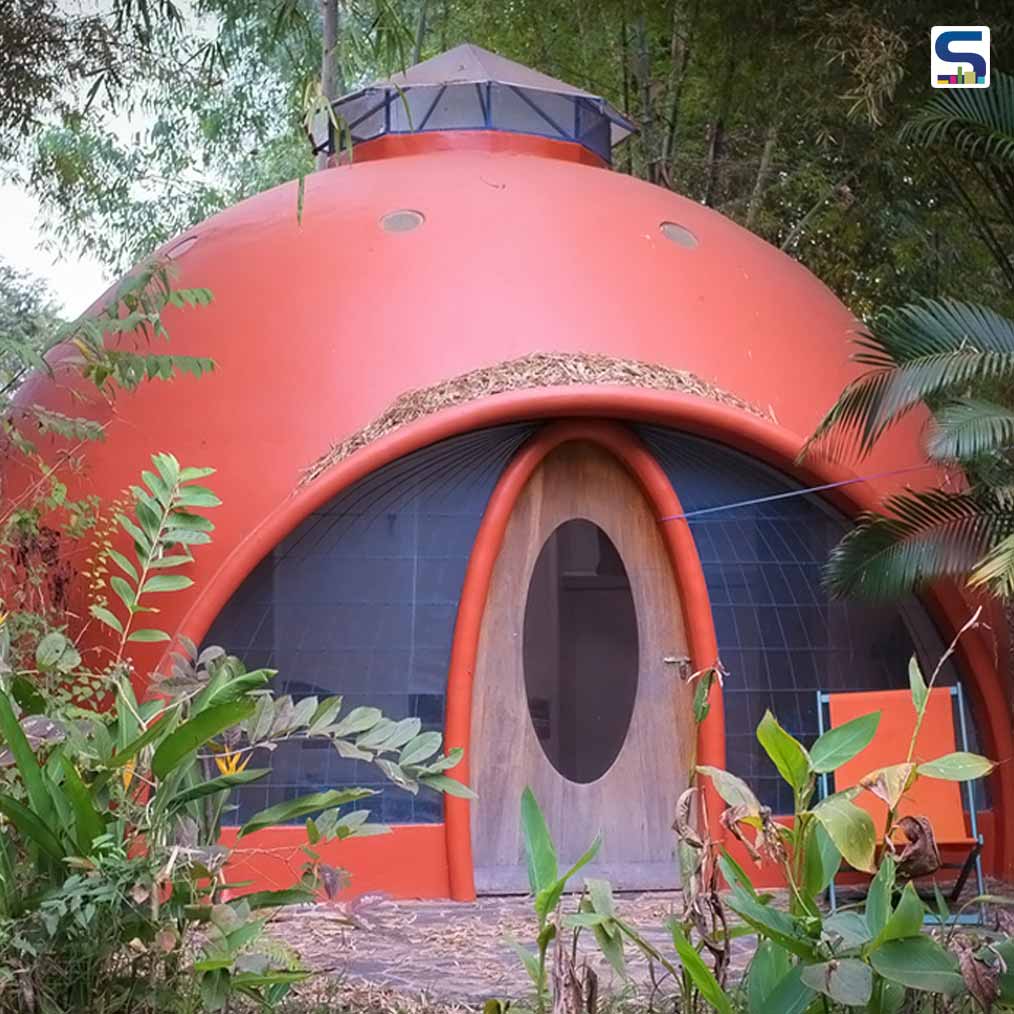
As we all know that cement is the source of 8% of the world's carbon dioxide (CO2) emissions, architects and engineers are in hunt for an eco-friendly and low-cost substitute for it. After examining so many alternatives like papercrete, hempCrete or foamCrete, finally they are successful in making airCrete- a foamy mixture of cement and air bubbles, which is cost-effective to produce, sustainable, fire-proof, bug-proof, rot-proof and DIY-friendly. Hajjar Gibran, Innovative Designer, Builder, Author, Spiritual Guide and the founder of DomeGaia created a house using AirCrete in Thailand. Read more about the aircrete structure created by the firm below at SURFACES REPORTER (SR):
Also Read: 10 Quirky Eco-friendly homes built entirely from recycled materials
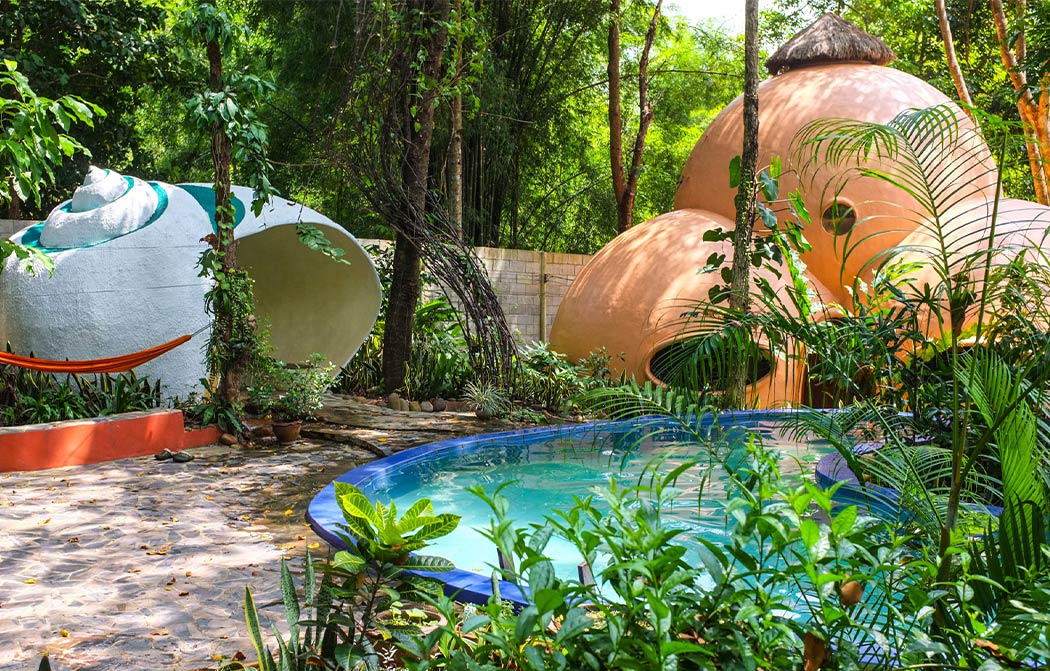
The dome structure created by Hajjar Gibran is a do-it-yourself house that can be put together at a very affordable price.
Lightweight and Low-Cost Material
The aircrete mixture is a lightweight building block that is insect-proof, fireproof, water-resistant, and provides proper insulation to the structure.
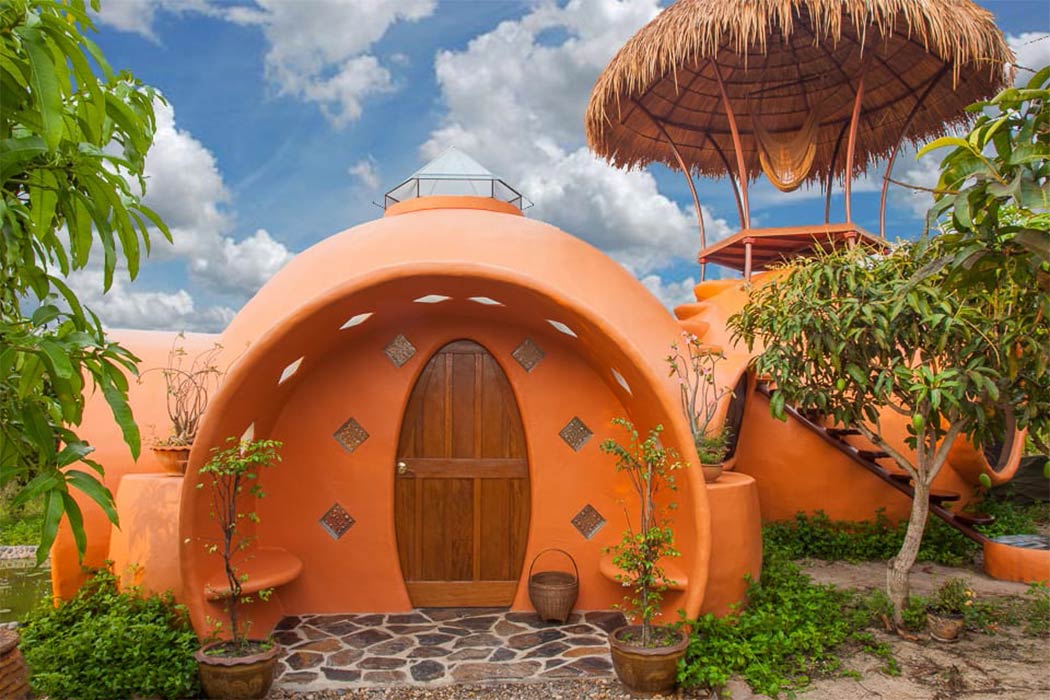 It is also a low-cost material that reduces building cost by 10 times and is a wonderful material to work with for single-story homes.
It is also a low-cost material that reduces building cost by 10 times and is a wonderful material to work with for single-story homes.
Also Read: Marine-Grade Concrete Reinforced with Recycled Plastic Fibres to Build Eco-Friendly Seawall by Volvo
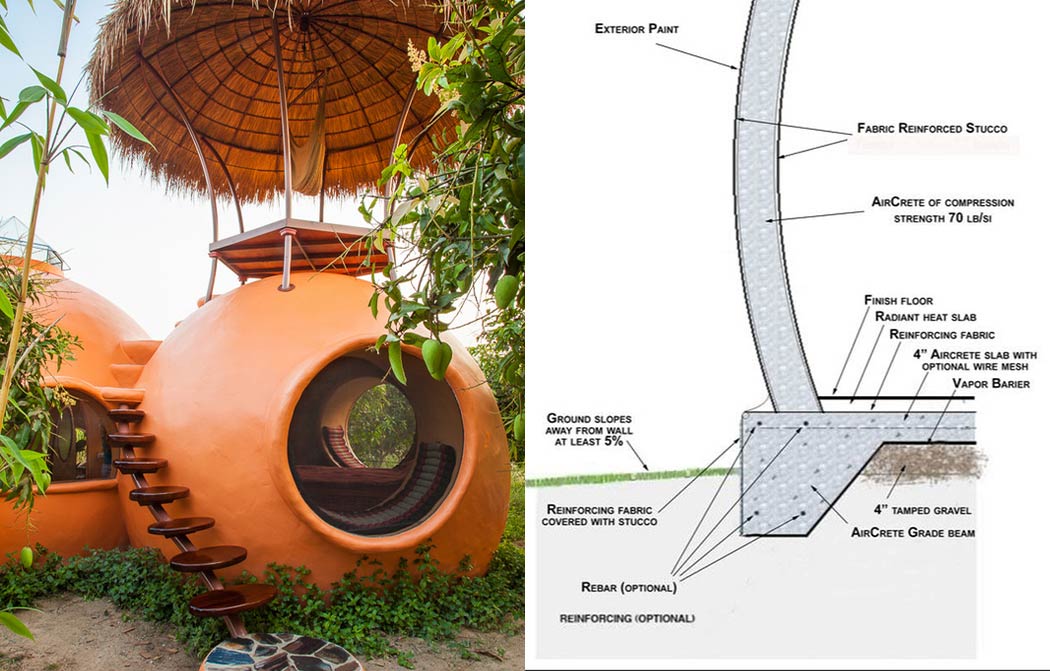
According to Gibran, the substance costs around $1 to $2 per square foot and per inch of thickness. That means Domegaia could make a 1,000-square-foot building with four inches thick walls for less than $8,000.
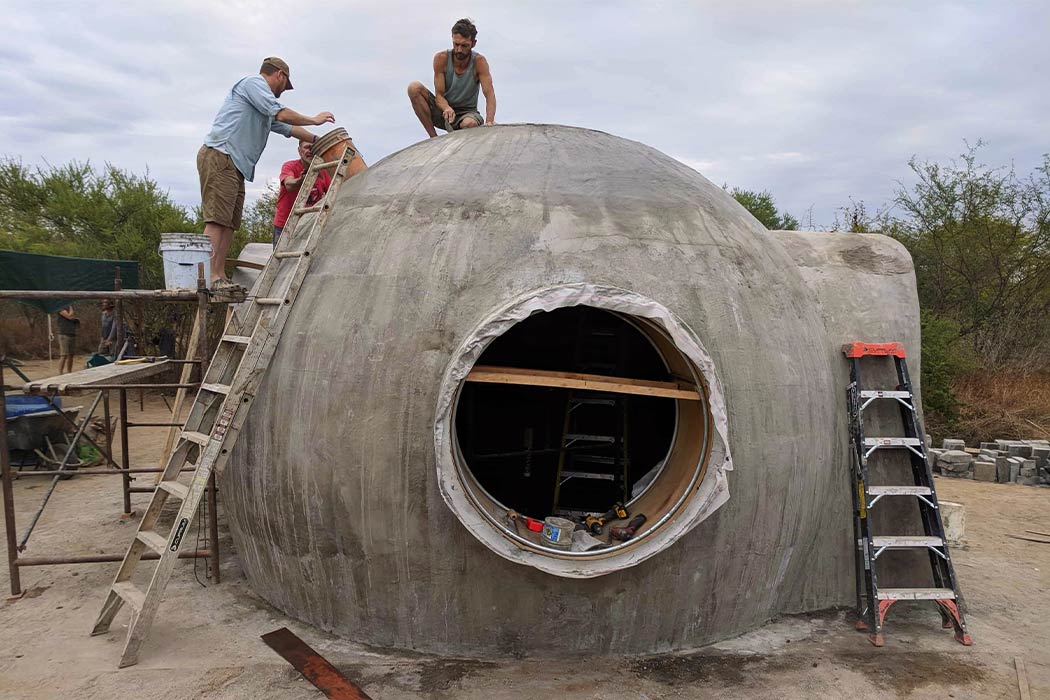 The low cost of materials keeps the price affordable no matter what, even for bigger or somewhat more elaborate domes.
The low cost of materials keeps the price affordable no matter what, even for bigger or somewhat more elaborate domes.
Easy to Shape in Any Desired Form
Another advantage of Aircrete is that it can be transformed into any desired shape- whether you want that your house would look like a Spongebob's Pineapple house, Minnie Mouse's house, a hobbit home, or a mini castle, anything can be formed with this material.
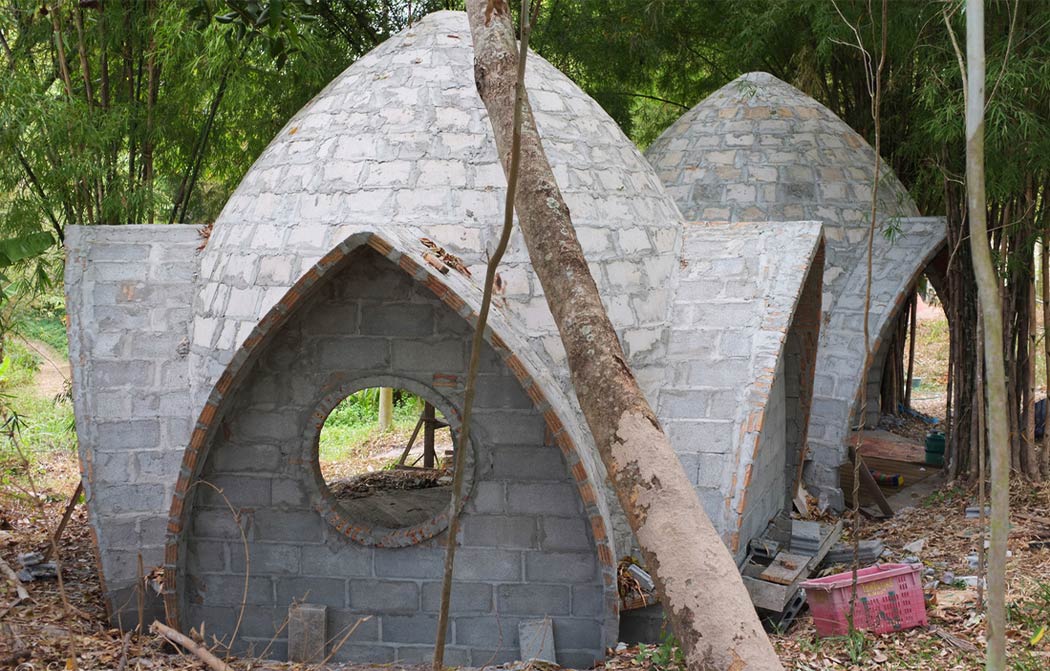
AirCrete is formed with the help of the natural foaming agent that works by suspending minuscule air bubbles in the concrete mixture. A regular foam generator scatters a mix of the foaming agent into the cement mixture and continues to blend it. Just 1 litre of dish detergent with 10 gallons of water makes enough foam to make about 2 cubic meters or 70 cubic feet of AirCrete. The foam increases the volume of cement by a factor of 5 – 7.
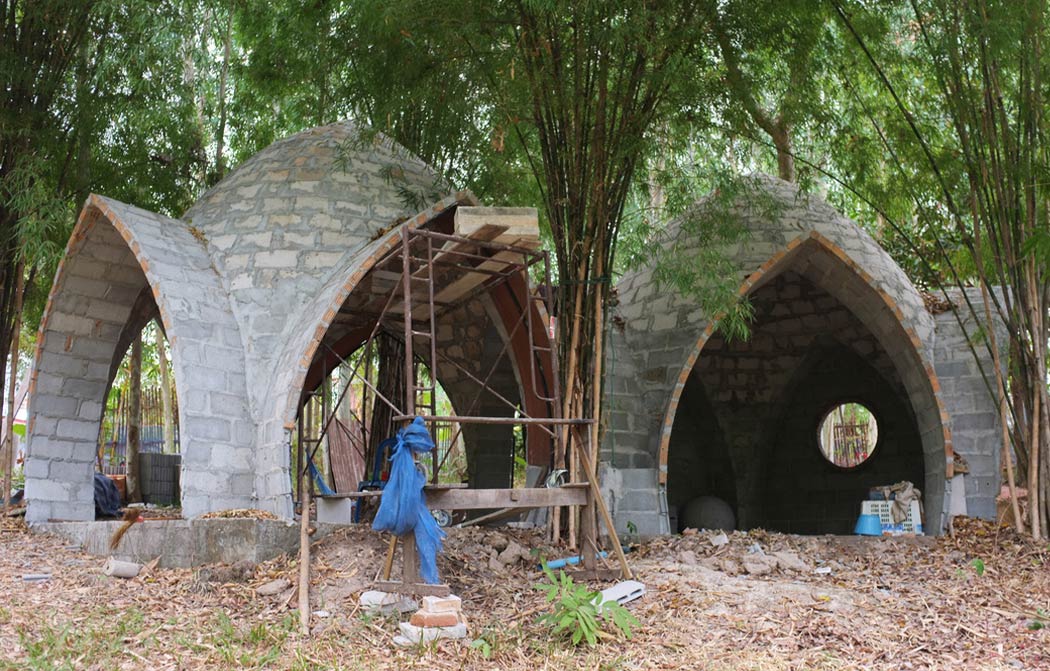 It reduces the need for gravel, sand, aggregates, or rock, which is expensive, requires a large amount of space and heavy equipment to deliver, and hard labour. AirCrete made buildings are moldable, robust, safe, scalable, eco-friendly and climate-friendly. You can check out his website to know how you can make airCrete by yourself. (the link given at the bottom of this post)
It reduces the need for gravel, sand, aggregates, or rock, which is expensive, requires a large amount of space and heavy equipment to deliver, and hard labour. AirCrete made buildings are moldable, robust, safe, scalable, eco-friendly and climate-friendly. You can check out his website to know how you can make airCrete by yourself. (the link given at the bottom of this post)
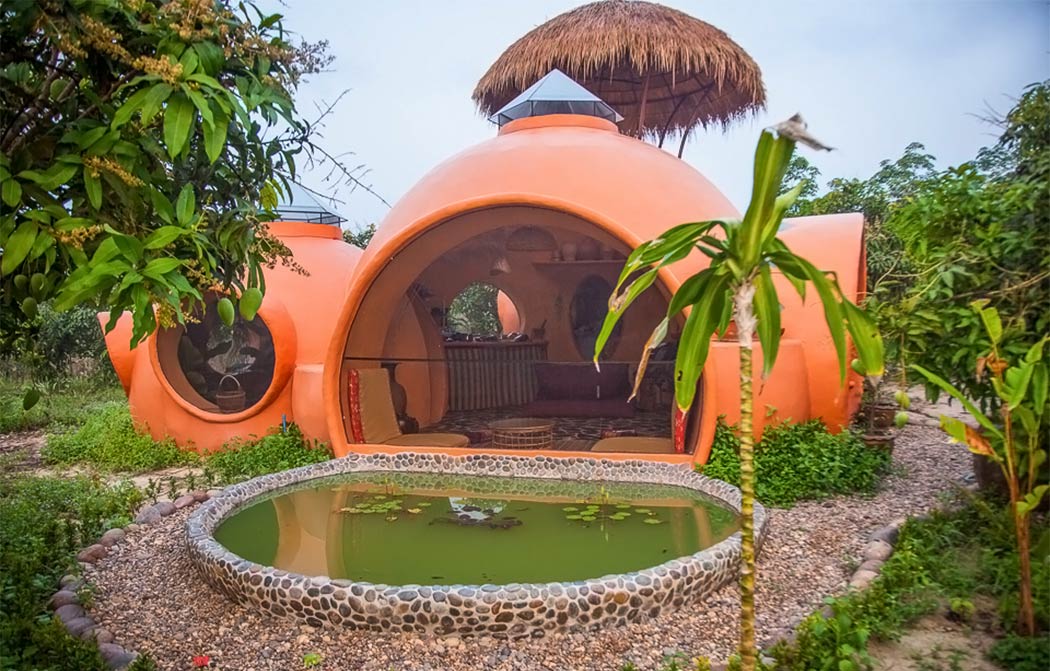
Energy-Efficient Dome House
The dome house designed by Hajjar Gibran is very energy efficient as it covers the home with minimal materials and keeps it warm.
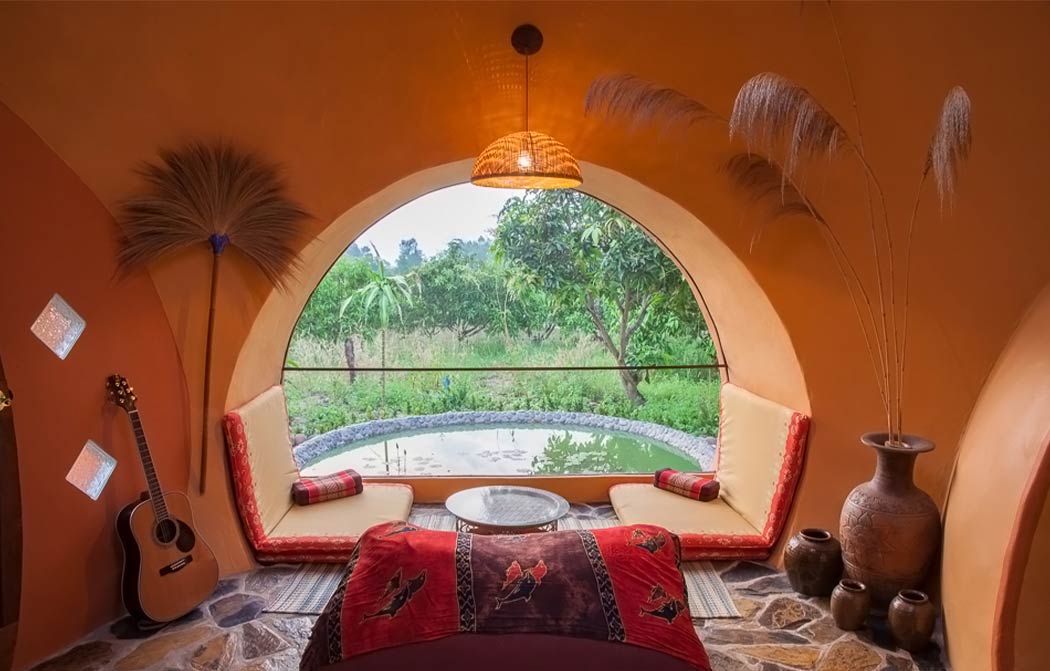
It took almost a month of prep work and an intensive ten days for the DomeGaia team to create this 20-foot diameter dome.
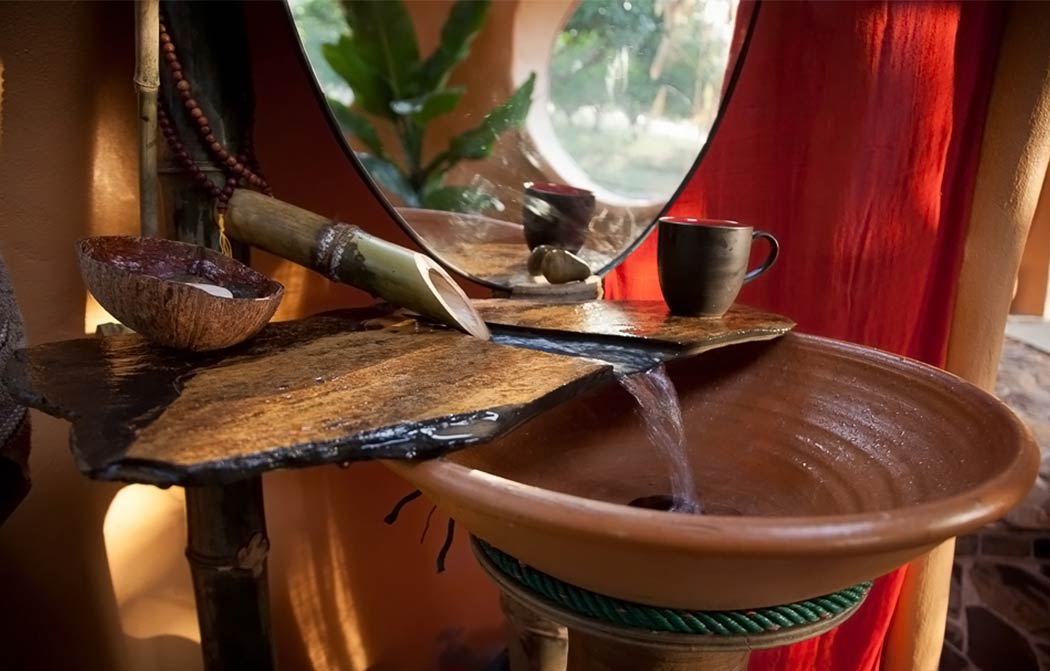 Thirty-five people were involved in the setting of bricks that are made from a mixture of water, cement and foam called AirCrete.
Thirty-five people were involved in the setting of bricks that are made from a mixture of water, cement and foam called AirCrete.
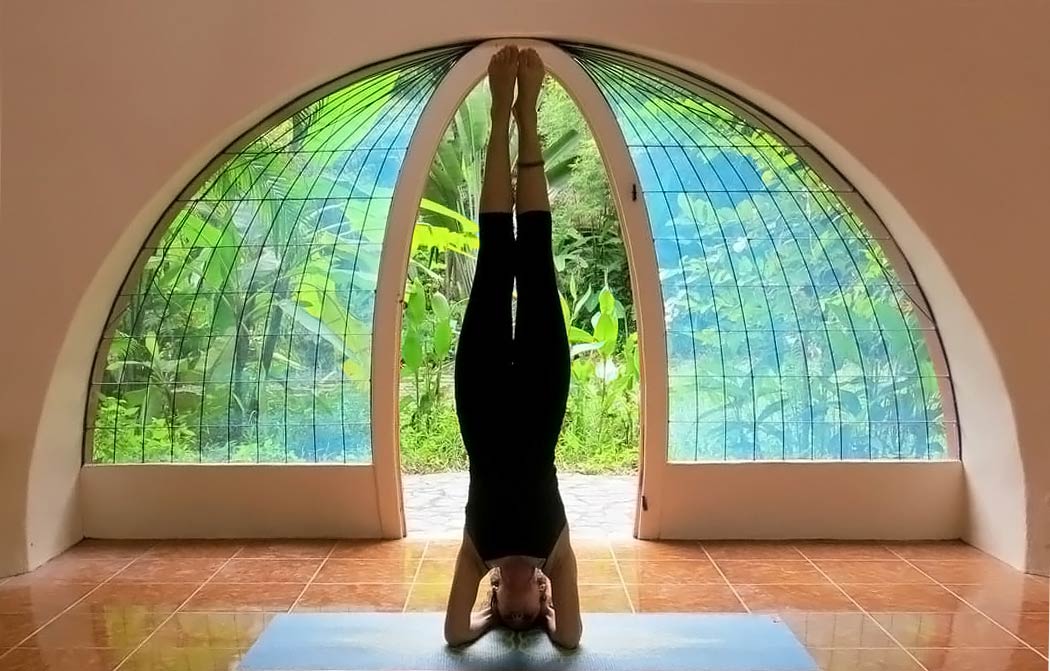
The bricks are formed by injecting high-pressure air into concrete. It gives the proper solid form to the bricks to hold them with one hand and cut them with a hand saw.
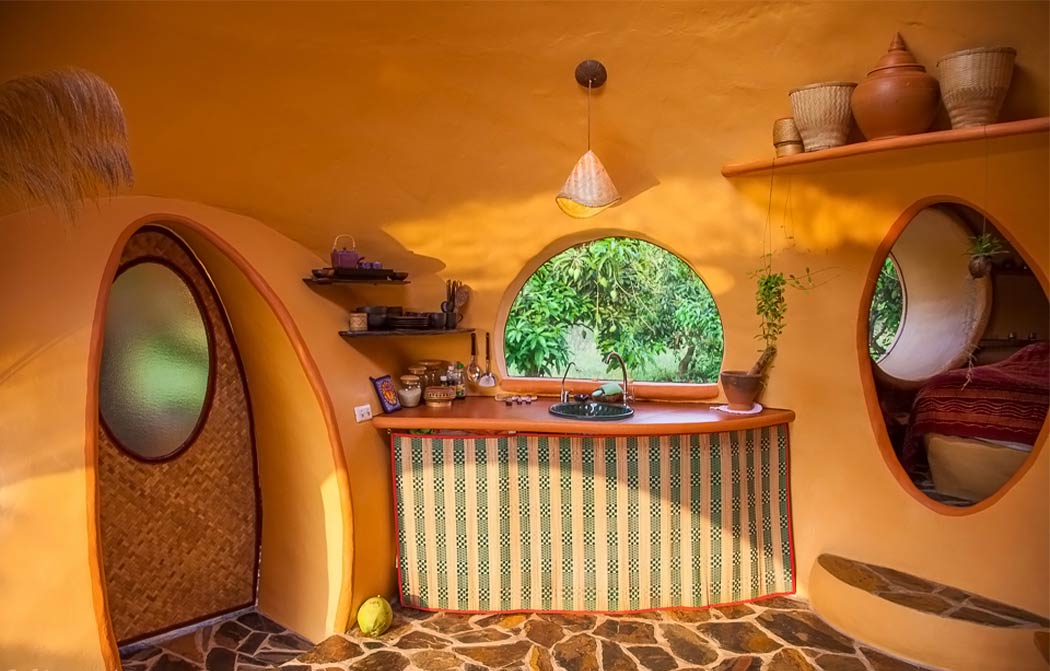
Safeguard Against Natural Disasters
The Dome house has the strongest structural shape that allows it to withstand earthquakes, tornadoes, forest fires, hurricanes, floods, and even volcanic eruptions.
Take a Virtual Tour to the Dome House
Project Details
Architecture Firm: DomeGaia
Principal Designer: Hajjar Gibran
Location: Thailand
Source: https://www.domegaia.com/
More Images
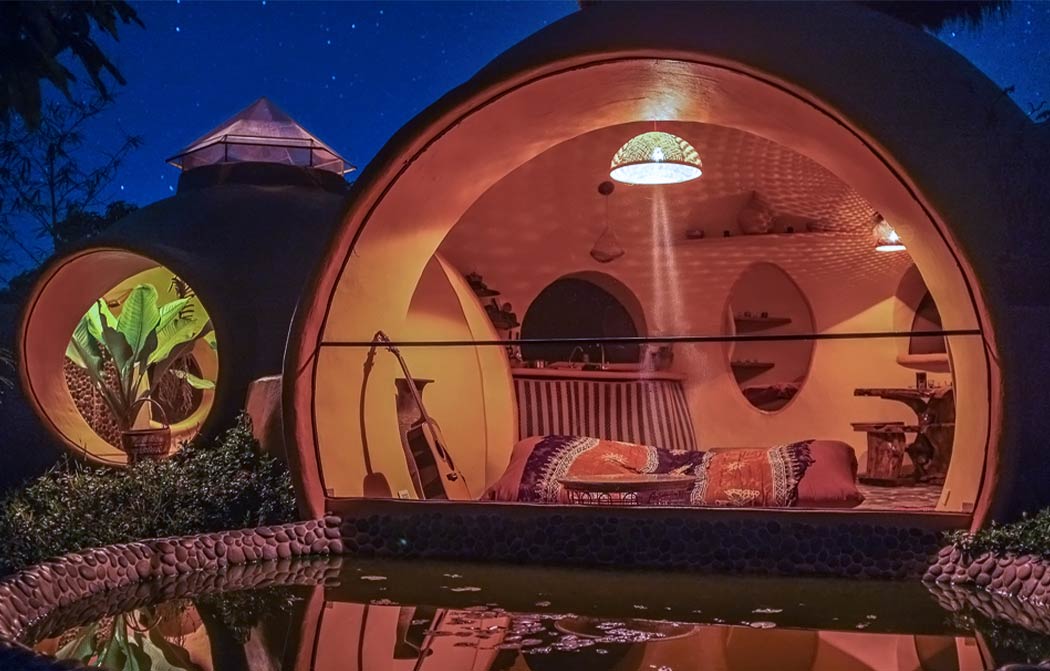
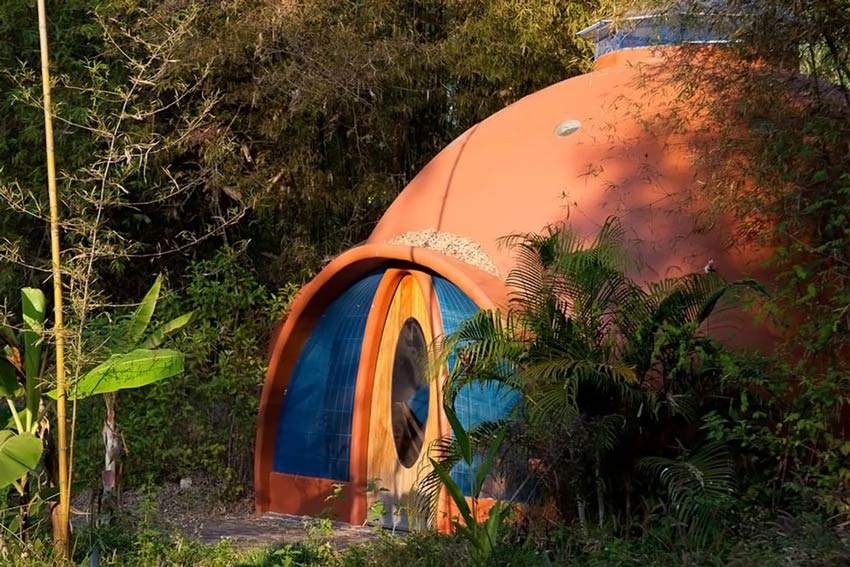
Keep reading SURFACES REPORTER for more such articles and stories.
Join us in SOCIAL MEDIA to stay updated
SR FACEBOOK | SR LINKEDIN | SR INSTAGRAM | SR YOUTUBE
Further, Subscribe to our magazine | Sign Up for the FREE Surfaces Reporter Magazine Newsletter
Also, check out Surfaces Reporter’s encouraging, exciting and educational WEBINARS here.
You may also like to read about:
8 fantastic recycled materials you can use to renovate
Colourful Domes Village in Hormuz Designed by ZAV Architects
Living in a Dome - A Wow Experience Literall